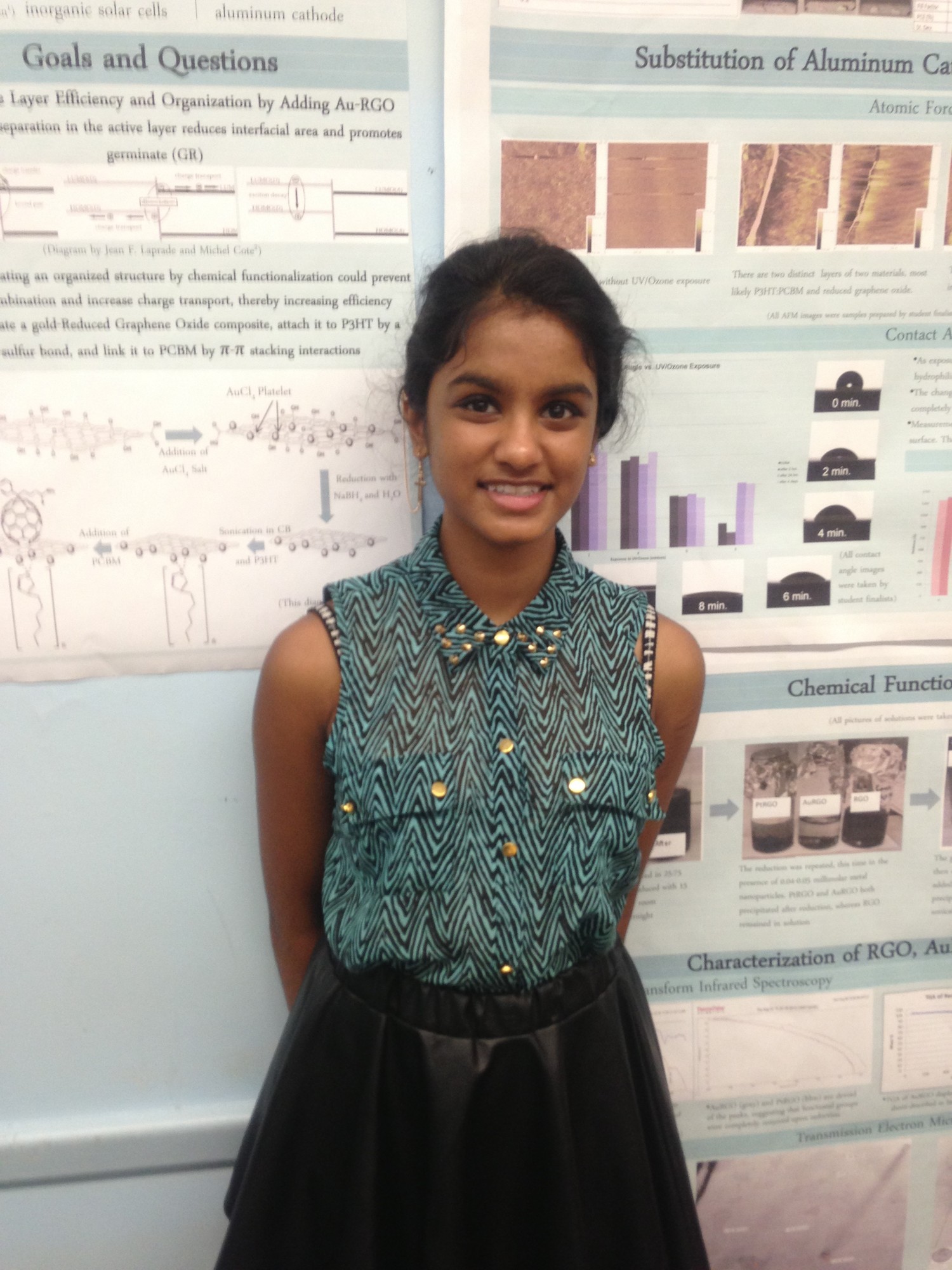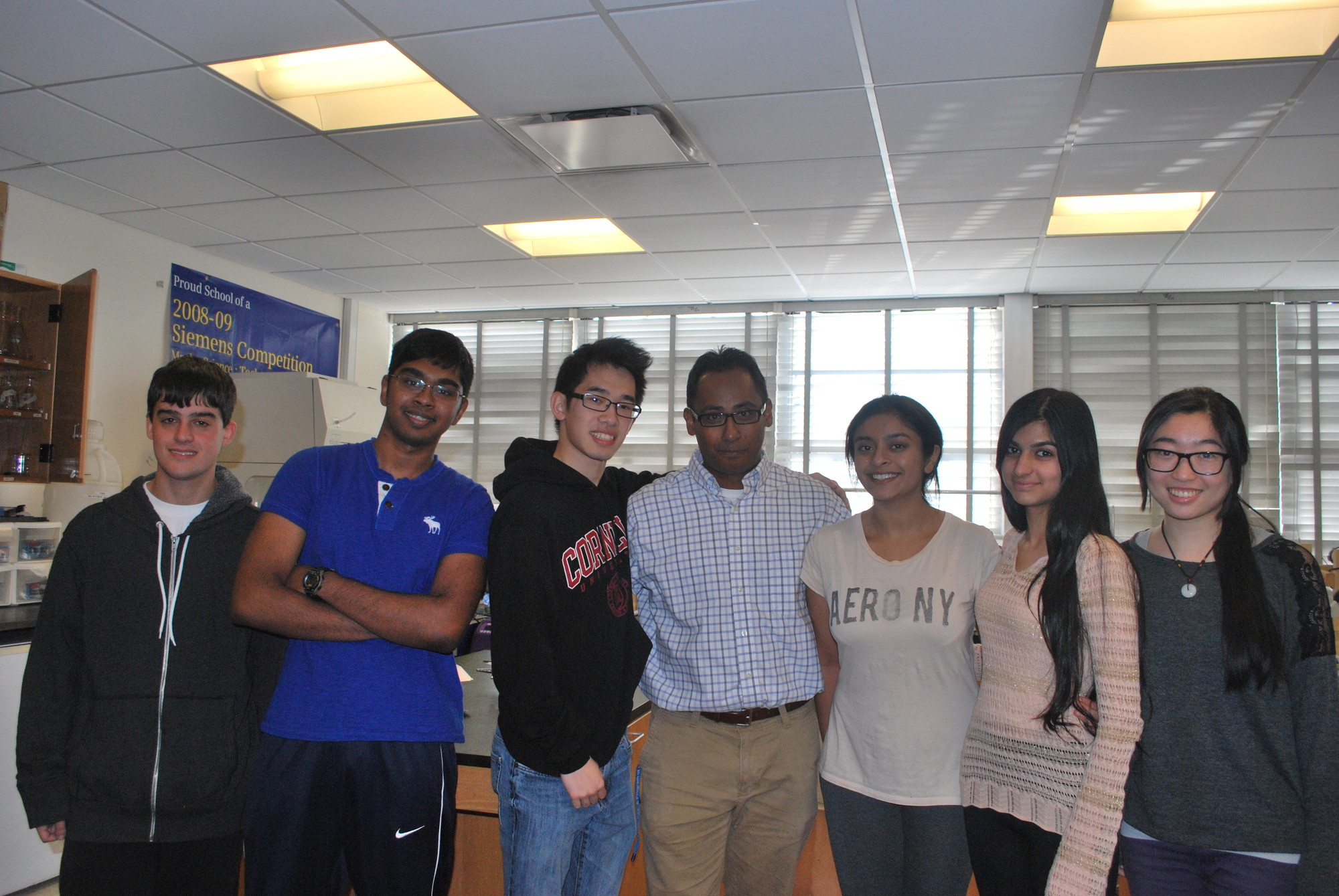Great expectations bring success
Five Towns boasts 14 Siemens regional finalists, semifinalists
It is no longer surprising when Hewlett High School students take Dr. Terence Bissoondial’s research classes and the work they do in the second-floor laboratory yields prize-winning results.
Coming on the heels of last year’s $100,000 grand-prize-winning trio of Jeremy Appelbaum, William Gil and Allen Shin, two groups of Hewlett students have been named regional finalists in the Siemens Math, Science and Technology Competition, and will compete Nov. 15-16 at Carnegie Mellon University in Pittsburgh to become finalists.
“There is an expectation to do well because we have done so well in the past,” said Bissoondial, who established the research program when he came to Hewlett in 1999. “There are great expectations, and as their mentor, there is more pressure, because everyone wants this to happen. I’m relieved when we’ve done well.”
Michael Green, Ayman Haider and Stephen Ng, and Priyanka Wadgaonkar, JiaWen Pei and Zainab Mahmood are the regional finalists. Hewlett also had two sets of semifinalists: Samantha DiSalvo, Ryan Kenny and Amy Vitha, and Joshua Elbaz, Kenneth Collado and Sara Flamenco.
And Hewlett isn’t alone in excellence. Lawrence High School senior Krishana Raghubeer, and senior Jake Plaut, of Rambam Mesivita High School in Lawrence, were also named semifinalists. Lawrence science teacher Rebecca Isseroff mentored Raghubeer, who partnered with Kaveh Issapoour and Noah Davis, of Syosset and Earl L. Vandermuelen high schools, respectively. Plaut collaborated with Michael Leibowitz, who attends Yeshiva University High School for Girls in Queens, and Daniel Rudin, a junior at Half Hollow Hills West High in Dix Hills.
Teamwork
Siemens is one of the nation’s most prestigious science competitions. “I’m just amazed,” Green said as he sat at a lab table with Haider and Ng. “I didn’t think I ever expected to be one of the regional finalists. It shows the hard work we put into this project.”
“We worked together as a team, did the hard work and eventually put forth the work to get the results we wanted,” said Haider.
“We didn’t give up — there was so much work,” said Ng. “The results came out successful. We were dedicated all the way.”
Their project, “Novel FyPP Protein Phosphatase 2A with Puroindoline B Domain Binds to Phytochromes in Ceratopteris richardii,” identified for the first time what Bissoondial called a “fusion gene” that could create a completely new independent function in a plant.
The relationships among Mahmood, Wadgaonkar and Pei were strengthened by this experience, according to Mahmood. “We were friends before the project, and this drew us closer together,” Mahmood said of her collaborators, with whom she has been friends since freshman year.
“We were able to help each other out,” said Pei, “and with research being a lot of hard work, time management was very important.”
The expectation of success that Bissoondial noted has filtered through the school, Wadgaonkar added. “We’re a good example to the rest of the students,” she said. “The years I’ve been in the class, they know the amount of work that goes into it and they see the awards.”
The girls’ project, “The Isolation and Characterization of an Ozone Responsive Stress Related Protein (OZS) in Ceratopteris richardii,” showed that multiple copies of the gene OZS would increase plant resistance to ozone, resulting in greater crop yields.
Hewlett’s semifinalist projects, “Utilization of the Gametophytes of Ceratopteris richardii to Characterize the LPS-Induced Hypersensitive Response in Plants” researched by DiSalvo, Kenny and Vitha; and “Integration of the Light and GA Phytohormone Signaling Pathways in Panicum virgatum to Enhance Biomass Production,” researched by Elbaz, Collado and Flamenco, focused on detecting bacteria in plants to make them more resistant to infection, and on using cellulose to increase production of switchgrass to produce more ethanol for use as a fuel, respectively.
Lawrence High and Rambam
Raghubeer, Issapoour and Davis’s project built on the work previously done at Lawrence with graphene. The project, “Improving Organic Polymer Solar Cell Efficiency by Increasing Active Layer Organization via PSS and PMMA channels and Graphene,” sought to maximize the energy lost in the production process and increase efficiency to create a less expensive solar cell. Simulations showed a 500 to 650 percent increase.
“It was painstaking work, and my teammates and I experienced a lot of failure at first,” Raghubeer said, “but when our solutions began to work as they should have, we knew it was worth all the trouble. I owe a lot to Mrs. Isseroff, my mentor. She really pushed me to do research, and she’s the reason I have this title.”
Approached by a grad student who had an idea for trapping bedbugs, Plaut and his team actually built a working device using microfibers, calling their project “Novel Cimex Lestularius Trapping Mechanism Using Electrospinning Technology.”
“I learned to collaborate with totally different fields,” Plaut said. “You think things are irrelevant, but everything loops around in the scientific engineering community.”
Regional finalists receive $1,000 each, and will receive another $2,000 apiece if they are named finalists. Semifinalists win a bag of prizes that typically includes one major state-of-the-art electronic gadget and smaller gifts.
The Siemens Foundation will announce the individual and team winners on Dec. 23, and present them with scholarships ranging from $10,000 to $100,000.
Have an opinion about this topic? Send your letter to the editor to jbessen@liherald.com.









